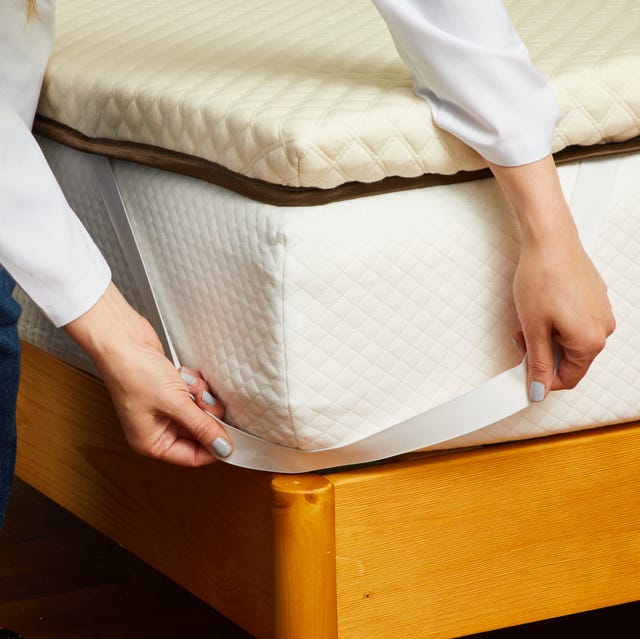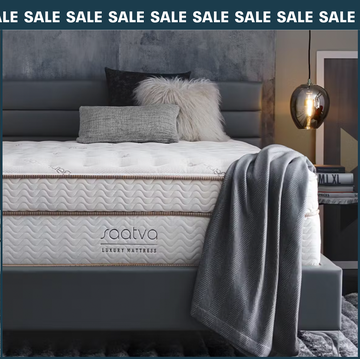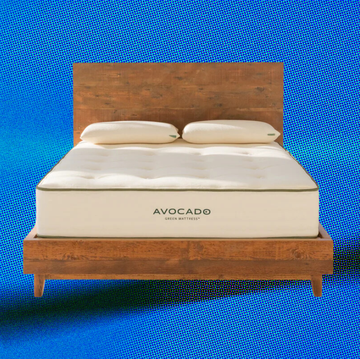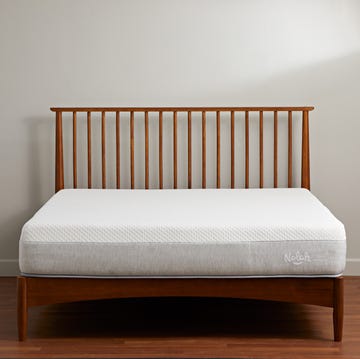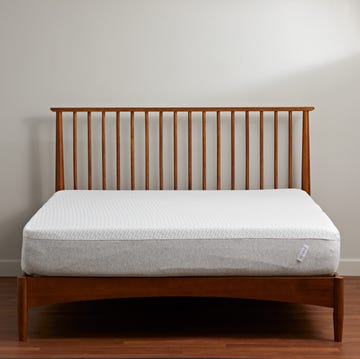The Best Mattress Toppers of 2025, According to Testing
Add a layer of comfort and support to your bed.

We've been independently researching and testing products for over 120 years. If you buy through our links, we may earn a commission. Learn more about our review process.
You don't necessarily need to buy a brand new mattress if you're looking to improve your sleep quality. Instead, consider adding a mattress topper to upgrade your bed. Toppers can make your bed feel either firmer or softer and sometimes even cooler, helping you customize the feel of your mattress. They're also ideal for temporary living situations (like a college dorm or a care facility) where you don't get to choose your mattress.
To find the best options, our bedding experts in the Good Housekeeping Institute Textiles Lab tested 47 different mattress toppers, including ones made with memory foam, down, down alternative and latex materials. We evaluated each topper's materials and specifications before GH analysts and at-home sleep testers tried them out first-hand to offer feedback on comfort, support, pressure relief, temperature regulation and more.
Other toppers we tested
Brooklinen Down Alternative Mattress Topper: This minimal topper has a five-sided design so it stays in place on your bed like a fitted sheet. Testers said it was comfortable and they liked the boxed design, which helped keep the fill in place. Still, it's not very substantial and won't drastically change the feel of your bed.
Woolroom The Wooly Mattress Topper: Made with wool and micro-coils, this high-end topper currently retails at over $700 for a Queen. Our testers were impressed by its supportive feel and said it transformed their beds without trapping heat, but ultimately we felt it was too pricey to make the shortlist.
Tuft and Needle Mattress Topper: Testers liked that this topper added a plush feel to their beds while also offering pressure relief for sounder, more comfortable sleep. But because this pick lacks straps, testers reported that it moved around and didn't stay secure on their beds.
How we test mattress toppers
In the Good Housekeeping Institute Textiles Lab, we've tested 47 different mattress toppers, including memory foam, down and latex options. We start by reviewing the materials and features of each topper before calling in samples for our at-home sleep testers to try out on their own beds. After sleeping on the toppers for several weeks, each tester fills out a survey to provide in-depth feedback. We follow up with testers annually to check how the mattress toppers are holding up with extended use. Here's a look at the factors we consider:
✔️ Comfort: Users give the mattress topper a rating for how comfortable it is to lie on.
✔️ Temperature: Each reviewer notes whether or not they maintained a comfortable body temperature while sleeping on the topper.
✔️ Mattress enhancement: We review in detail if — and how — the topper changes the feel of our tester's mattress.
✔️ Sound: To ensure the toppers will be quiet and undetectable, each one is rated for whether it made noise during use.
✔️ Ease of use: Testers rate how easy (or difficult) it is to put the topper onto their beds.
✔️ Stay-in-place capabilities: The toppers are scored on whether or not they shift around on the beds during use.
✔️ Overall satisfaction: Finally, testers tell us whether they liked sleeping on the mattress topper, whether they plan to continue using it and any other helpful insights.
What to look for when shopping for mattress toppers
When it comes to mattress toppers, there isn't a one-size-fits-all solution for everyone. Here are the factors to consider when shopping for your most comfortable mattress topper:
- Thickness: A good topper should be at least 2 inches, but a thicker option will offer more support, especially if it's made of solid foam. People with larger frames should opt for thicker toppers for better support. If you’re just looking for a small upgrade or you don't want to make your bed too high, opt for a thinner model, which will also cost less.
- Softness: If your mattress is too firm, adding a down or fiberfill topper can offer plush comfort.
- Support: If you feel pain when you wake up, adding a foam topper can increase support and help you achieve proper spinal alignment as you sleep.
- Temperature regulation: Most mattress toppers are made of foam, down or down alternative, all of which can trap heat. If you're concerned about overheating while you sleep, look for a mattress topper with cooling features.
- Price: Though they're less expensive than a new mattress, toppers are still an investment and can cost quite a bit more than a mattress pad. Though it's not a hard and fast rule, a good mattress topper typically costs between $200 and $300 for a Queen size.
- Care: Many mattress toppers aren't washable, especially ones made of foam. Some fiberfill toppers are machine washable but may require a large-capacity machine to fit properly. In some cases, the topper's cover may be removable and washable to help you keep it clean.
- Certifications: To make sure there are no harmful levels of off-gassing chemicals in foam materials, look for labels like CertiPUR-US. For down toppers, check for the Responsible Down Standard (RDS), which ensures the ducks and geese receive humane treatment.
How to decide on materials and construction
The are several types of mattress toppers you can choose from. The right one for your needs depends on what you're looking for, including whether you'd like it to provide more firmness and support or you want it to soften up your bed.
- Memory foam mattress toppers: These are popular because they can add support, comfort and pressure relief to any mattress. There's also a wide range of price points in this category — you can even find some for under $100. You'll also see variations in memory foam, like ones infused with gel or graphite to help prevent overheating from the foam.
- Latex mattress toppers: Unlike memory foam made from petroleum, latex is a natural foam made from rubber trees. It's typically more expensive, but it's durable, more resilient and has more bounce than traditional foam. Latex toppers can be organic since they're made from natural materials.
- Pillow top mattress toppers: If your bed feels too hard and you want to add cloud-like softness, a topper made of down or fiberfill is your best bet: 100% down or down featherbeds are the most luxurious and fluffiest, while fiberfill made of polyester down alternative is less expensive and animal product-free.
- Hybrid mattress toppers: These typically include a layer of foam with a pillow top cover so you get pressure relief and support combined with plush softness. You can also find hybrids that use memory foam clusters and fiberfill in the blend — these feel more like a featherbed but with extra support.
FAQs
What's the difference between mattress toppers, pads and protectors?
- Mattress toppers are usually several inches thick and sit right on top of your mattress. The goal of a mattress topper is to make your bed more comfortable, whether by adding support or pillow top softness.
- Mattress pads aren't as thick as toppers. They also typically have five sides and go onto your bed like a fitted sheet, rather than just sitting on top. Adding a mattress pad doesn't change the feel of your bed as much as a mattress topper does, but they're typically less expensive and can often help protect your mattress from stains or spills.
- Mattress protectors are designed specifically to keep your mattress safe from accidents, dust, bedbugs and more. They don't usually have comfort enhancements. Toppers and pads can technically extend the life of your mattress by protecting it from wear and tear, but a protector is more suitable if you're just looking to keep your mattress safe. These can be five-sided (like a mattress pad) or fully encased to keep the mattress protected on all sides.
Does a mattress topper improve sleep quality?
Yes, a mattress topper can actually help you sleep better. Whether your mattress is starting to sink or sag or it's brand new and you just don't love the feel, a topper can improve its comfort. You can layer on a mattress topper for an enhanced feel, whether you purchased an expensive model that needs an affordable upgrade or you find your bed is lacking in comfort or support. Mattress toppers can also provide a boost to an older mattress if you no longer love the feel but aren't ready to buy a new mattress.
Just note that a mattress topper isn't for everyone, especially for those who prefer a firm mattress. Most toppers add softness, pressure relief or cradling comfort, and while they're certainly supportive, they won't give you the firm feel that'd you find in an innerspring bed without a pillow top.
How do I use a mattress topper?
As the name implies, a mattress topper sits right on top of your mattress. Some have straps that you can anchor onto your mattress, whereas others solely lie on top. If you use a mattress pad or protector to keep your mattress safe from spills or wear and tear, you can add them over your mattress topper as well.
Keep in mind: A mattress topper can add several inches to your bed's height. Make sure to buy sheets that will fit your mattress and its topper, especially if you have a tall mattress to begin with.
Why trust Good Housekeeping?
Lexie Sachs is the executive director of strategy and operations in the Good Housekeeping Institute, and formerly served as the executive director of the Textiles Lab, where she led testing efforts to find the best bedding, including mattress toppers. She has been testing toppers since she joined GH over 12 years ago, reviewing them in the Lab and sending them to the homes of consumer testers for more feedback. She also loves trying out mattress toppers on her own bed and swears by their ability to change the feel of any mattress.
Amanda Constantine is a home and apparel reviews analyst in the Good Housekeeping Institute Textiles Lab. She has tested a variety of bedding products like sheets, mattress toppers, waterproof mattress protectors, silk pillowcases and more. Constantine also reviews mattresses for the Textiles Lab and has visited mattress production facilities to learn more about the materials used and the construction process. She recently updated this article based on testing for Good Housekeeping's 2025 Bedding Awards and added new picks to reflect tester feedback and Lab results.
More bedding guides
Lexie Sachs (she/her) is the executive director of strategy and operations at the Good Housekeeping Institute and a lead reviewer of products in the bedding, travel, lifestyle, home furnishings and apparel spaces. She has over 15 years of experience in the consumer products industry and a degree in fiber science from Cornell University. Lexie serves as an expert source both within Good Housekeeping and other media outlets, regularly appearing on national broadcast TV segments. Prior to joining GH in 2013, Lexie worked in merchandising and product development in the fashion and home industries.
Amanda (she/her) researches and reports on products in the Good Housekeeping Institute's Textiles, Paper & Apparel Lab, ranging from clothing and accessories to home furnishings. She holds undergraduate degrees in apparel merchandising and product development and advertising and marketing communications, as well as a master of science degree in consumer sciences from The Ohio State University. Prior to joining Good Housekeeping in 2022, Amanda was a lecturer for the fashion and retail studies program at Ohio State, where she taught fashion and textiles courses.


Best Innerspring Mattresses

The Best Mattresses in a Box
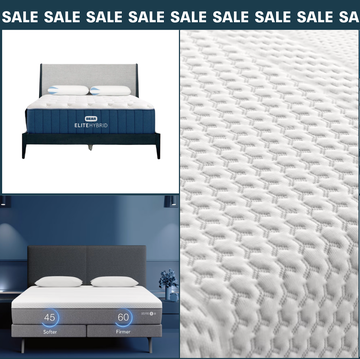
The Best Memorial Day Mattress Sales of 2025
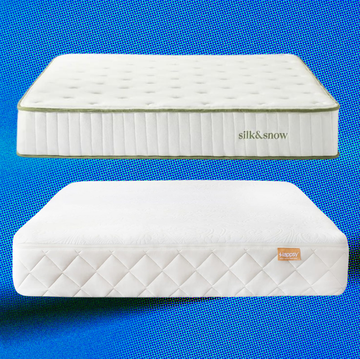
The Best Organic Mattresses













